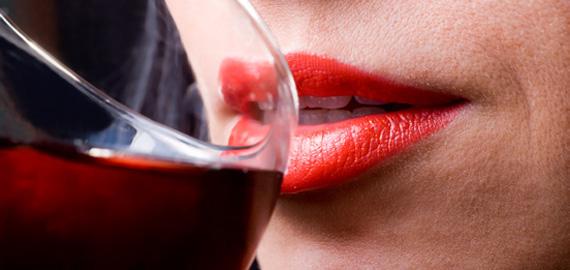New to wine?
How to taste wine

1. Look at the wine, especially around the edges. Tilting the glass a bit can make it easier to see the way the colour changes from the centre to the edges. Holding the glass in front of a white background, such as a napkin, tablecloth, or sheet of paper, is another good way to make out the wine’s true colour. Look for the colour of the wine and the clarity. Intensity, depth or saturation of colour are not necessarily linear with quality. White wines become darker as they age while time causes red wines to lose their colour turning more brownish, often with a small amount of harmless, dark red sediment in the bottom of the bottle or glass. This is also a good time to catch a preliminary sniff of the wine so you can compare its fragrance after swirling. This will also allow you to check for any off odours that might indicate spoiled (corked) wine.
2. Swirl the wine in your glass.
This is to increase the surface area of the wine by spreading it over the inside of the glass allowing the fragrance to escape from the solution and reach your nose. It also allows some oxygen into the wine, which will help its aromas to open up.
3. Note the wine’s viscosity
(how slowly it runs back down the side of the glass) while you’re swirling. More viscous wines are said to have ‘legs’ and are likely to be more alcoholic. Outside of looking pretty, this has no relation to a wine’s quality but may indicate a more full-bodied wine.
4. Sniff the wine.
Initially you should hold the glass a few inches from your nose. Then let your nose go into the glass. What do you smell?
5. Take a sip of wine, but do not swallow it
until you are finished with this step. The difference between drinking and tasting is expectorating! Roll the wine around in your mouth exposing it to all of your taste buds. You will only be able to detect sweet, sour, salty, bitter and umami (meaty or savoury). Pay attention to the texture and other tactile sensations such as an apparent sense of weight or body.
Note: Spit the wine into a spittoon if you are planning to taste lots of wine. If you consume the alcohol, this might cloud your tasting ability. If you’re driving, you should definitely use the spittoon.
6. Aspirate through the wine.
With your lips pursed as if you were to whistle, draw some air into your mouth and exhale through your nose. This liberates the aromas for the wine and allows them to reach your nose where they can be detected. The nose is the only place where you can detect a wine’s aromas. However, the enzymes and other compounds in your mouth and saliva alter some of a wine’s aromatic compounds. By aspirating through the wine, you are looking for any new aromas liberated by the wine’s interaction with the environment of your mouth.
7. Take another sip of the wine,
but this time (especially if you are drinking a red wine) introduce air with it. In other words, slurp the wine (without making a loud slurping noise, of course). Note the subtle differences in flavour and texture.
8. Note the aftertaste.
How long does the finish last? Do you like the taste?
9. Write down what you experienced.
You can use whatever terminology you feel comfortable with. The most important thing to write down is your impression of the wine and how much you liked it. Many wineries provide booklets and pens so that you can take your own tasting notes. This will force you to pay attention to the subtleties of the wine. Also, you will have a record of what the wine tastes like so that you can pair it with meals or with your mood.
10. Try pairing wines with unusual ingredients
and note the how it enhances or diminishes the flavours of the wine. With red wines try different cheeses, good quality chocolate and berries. With white wines you can try apples, pears and citrus fruits. Pairing wine with food is more complicated than ‘red with beef and white with fish’. Feel free to drink whichever wine you want with whatever food you want, but remember a perfect pairing is a highly enjoyable experience.




